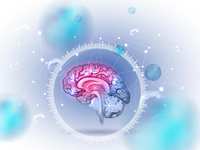Treating Trauma Through EMDR

Trauma and its Impact
Many people think of trauma as only big traumatic events, something like combat experience or acts of violence, but trauma can be anything that you experience as traumatic and causes a considerable amount of distress. Trauma usually involves intense fear, helplessness, or horror. Trauma leaves a long-lasting negative effect on the self and the psyche. Symptoms of trauma include hyper and hypo vigilance, heightened startle response, flashbacks, nightmares, trouble sleeping, irritability, anxiety and depression.
Trauma can overwhelm our systems and cause disruption of processing the experience as one normally processes experiences. Trauma when not processed can carry forward and affect our present lives and functioning. The memories are often triggering, leading to undesirable symptoms like anxiety and depression. Our brains are wired for survival. When our survival feels threatened our brain goes into fight, flight or freeze. It’s our brain's way of keeping us alive in a threatening situation. Often when people experience trauma they begin to believe negative things about themselves as a result of the trauma. For example, they may begin to believe that there is something defective about them, that they are responsible for what happened, they may question their safety, or may feel feelings of powerlessness. They begin to see the world through this lens and it becomes a self fulfilling prophecy. After a traumatic situation you begin to adapt to life as you now know it to keep yourself safe. As time goes on these adaptations can become maladaptive and are no longer serving their original purpose of keeping you safe. These maladaptive adaptations can keep you from growing, healing and moving forward.
How Can EMDR Help?
Eye Movement Desensitization Reprocessing Therapy also known as EMDR uses bilateral stimulation, using eye movements or tapping, to reprocess traumatic memories and provide desensitization to the traumatic memories and triggers. EMDR helps move the memories from the maladaptive neural network to the adaptive neural network. By remembering traumatic memories with bilateral stimulation the memories are able to be linked to the adaptive neural network resulting in memory reconsolidation. Once in the adaptive neural network the traumatic memories are no longer so emotionally charged or triggering. The individual will be able to think about the memories without them being so painful and see them as in the past and with some resolution and peace about them. The bilateral stimulation leads to an adaptive shift resulting in reduced reactive behaviors and an increased sense of self. In EMDR memories are reprocessed, triggers are desensitized and a roadmap for appropriate adaptive functioning in the future is created. Our brains are resilient and are wired to heal. EMDR helps facilitate that healing.
EMDR has been extensively researched and is a recommended treatment for treating PTSD by the The American Psychiatric Association, The World Health Organization, and The American Psychological Association. You do not have to have PTSD to benefit from EMDR therapy.
If you are interested in learning more about EMDR here is a link to a video about it. Myself and several other therapists in our office offer EMDR therapy. To schedule an appointment please call 281-528-1523 and let the receptionist know that you are interested in EMDR therapy. Our team will be able to help you find a therapist that will be the right fit for you based on your needs.
Nicole Garrett, MA, LPC-Associate
Supervised by Sara Miischler, MA, LPC-S


















